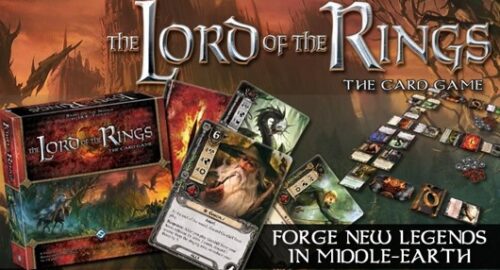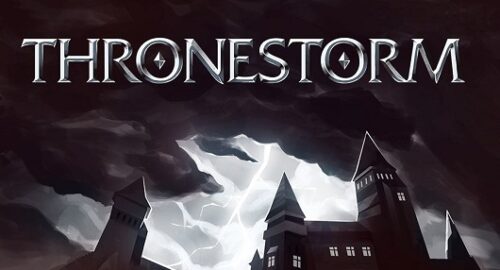Quests of Valeria is a charming and engaging multiplayer card game with polished mechanical and flavourful elements. It should appeal to a broad audience of both casual and hardcore gamers for its easy and teachable rules, its tactical and strategic depth, its colourful visual style and its quick setup. I’d recommend it as a plain good time for everyone, if only it didn’t also remind me a little too much of a certain other very popular game…
• Designer: Isaias Vallejo
• Publisher: Daily Magic Games
• Number of Players: 1-5
• Playing Time: 45 minutes +

Quests of Valeria is a card game for 1-5 players combining elements drawn from different games into a novel combination. The objective of the game is to earn points by finishing quests, best done by efficiently deploying your heroes’ abilities. Each player is dealt a hand of cards, which they use as their resources, in the style of Race for the Galaxy or San Juan. Victory points are accumulated by completing quests, each with a distinct cost and reward. Quests belong to one of five main categories of quests, and are drawn from a shared, renewable pool of four; players also receive a hidden guild master card that grants bonus points for two of the five flavours of quest, as in Lords of Waterdeep. Completing these quests is a matter of bringing enough muscle, magic and coin, as well as having the right skills, represented by the citizen roles icons: worker, soldier, shadow, and holy. Both types of resources are to be found on citizens, which players can recruit from the tavern into their guild. Citizens are recruited from a common pool of six available options, like Star Realms, and are paid for by discarding cards from your hand or your guild. The amount paid is set by a descending track, like Suburbia, so cards that stick around unbought become progressively cheaper, while hiring citizens from your hand always costs two cards. A limited number of citizen cards also allow direct interaction with other players, stealing or destroying cards from their hands or taverns.
Players are limited to taking two actions per turn: drawing a card, hiring a citizen, reserving a quest in the tavern (or resetting the tavern and then reserving a quest), and completing a quest. Quests and citizens both frequently reward bonus actions in addition to victory points and resources for completing further quests. Much of the strategy in the game consists of elegantly chaining these together to make efficient use of limited actions and resources. This requires being adaptable about the ever-changing composition of the tavern, as the available options will change from turn to turn. Blocking is also a major part of the game, as both hiring citizens and resetting the tavern’s quests can seriously disrupt a risky strategy. Reserving quests can help mitigate that risk, but at the cost of a precious action; being flexible is usually (but not always) better than single-minded pursuit of a valuable quest.

Gameplay in Quests of Valeria is similar to Splendor, with players making and executing their plans over a shared set of resources and objectives, where each move changes the overall landscape. With three to five players, the game plays more like Lords of Waterdeep; there is a satisfying balance between luck and skill elements, and between planning and adaptation. The balance between focusing on your own situation and trying to block other players seems tuned away from interaction in favour of maximizing the efficiency of your own moves, and the game becomes a bit isolated, though this is a hard balance to strike for multiplayer settings. In the two-player game, blocking becomes much stronger, and the overall feel is much more ruthless and interactive. Both modes are engaging, and every group I’ve tested this with has had fun playing, even on the first try. The single-player mode is a curiosity, something that puzzle-oriented gamers might enjoy, though not a good enough reason to buy the game on its own.
This is an easy game to teach, and players can get into it quickly. There are blessedly few mechanics, and while the iconographic descriptions of card abilities are not always obvious, they’re easy enough to look up in the rulebook. The game takes a surprisingly long time to play with four or more players, and the 45 minutes suggested on the box is on the low end, though this depends a bit on how seriously players are examining their options. Setup is quick, and the game is quite portable, which might recommend it for travel, or whenever space constraints are binding.
I’ve gone out of my way in this review to point out the many places where this game resembles other games, and in most cases, these similarities are clever nods to successful ideas. You can feel the appreciation of the designer for the whole genre. But there is one set of similarities that sticks out as more than just a clever nod, and that’s to Lords of Waterdeep, to which Quests of Valeria owes a deep debt. High fantasy skin? Check. Hire adventurers and use them to complete quests? Check. Five flavours of quests? Check. Hidden identities that give point bonuses for focusing on two of those flavours? Check. Four quests available at a time? Check. Suggestive leave-it-to-the-player’s-imagination quest titles? Check. One cute line of flavour text? Check. The list goes on. Somewhere, there is a line between loving homage and knockoff, and it seems to me like Quests of Valeria is dancing on that line, if not slightly over it.
In some ways, I’m glad the game reminds me of Lords of Waterdeep (and Splendor, and Star Realms, and so on), because that’s one of the best games on the market. But it also leaves an unpleasant aftertaste to be so similar, not only in the ways that would be difficult to change (game mechanics) but also in trivial ways (flavour text). There is no overall lack of design or aesthetic originality here. It draws on a rich preexisting setting. The art is colourful and evocative in a cartoony, Mike Krahulik-like fantasy style. The characters and illustrations are delightfully flavourful, with the grim, sturdy priestess being a standout. This general level of polish suggests that mimicking certain elements of Lords of Waterdeep so closely was intentional, and that strikes me as an unfortunate choice. It also seems needless – Quests of Valeria is a skilfully executed and entertaining game, and I would certainly recommend it to anyone interested in a light to moderate multiplayer strategy card game, easy to teach and fun to play. I just wish they’d paid homage at a slightly greater remove to one of the most recognizable games of the last decade.






